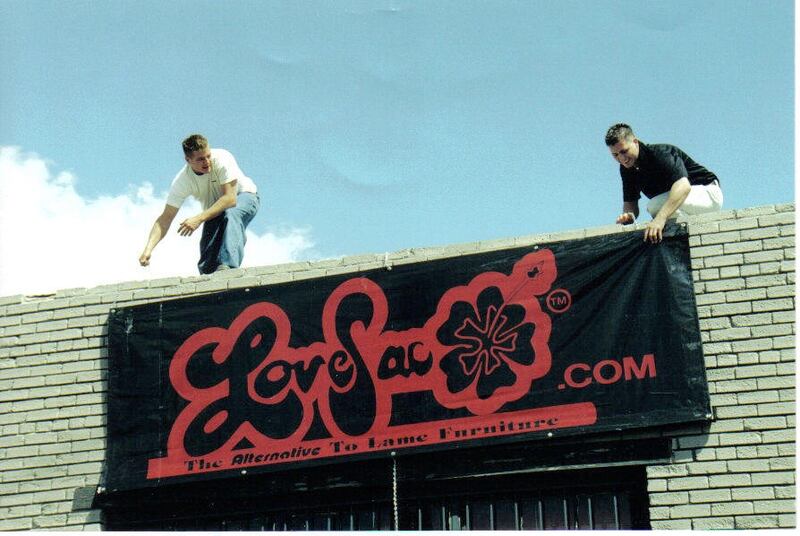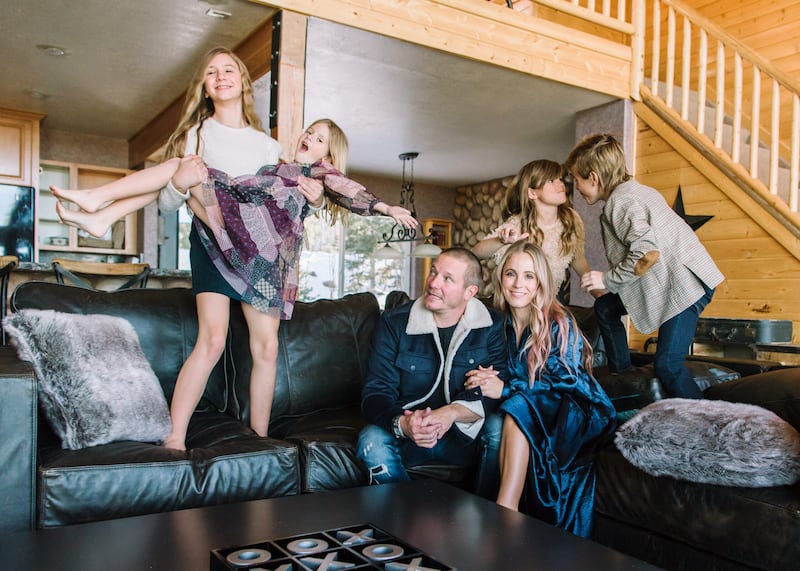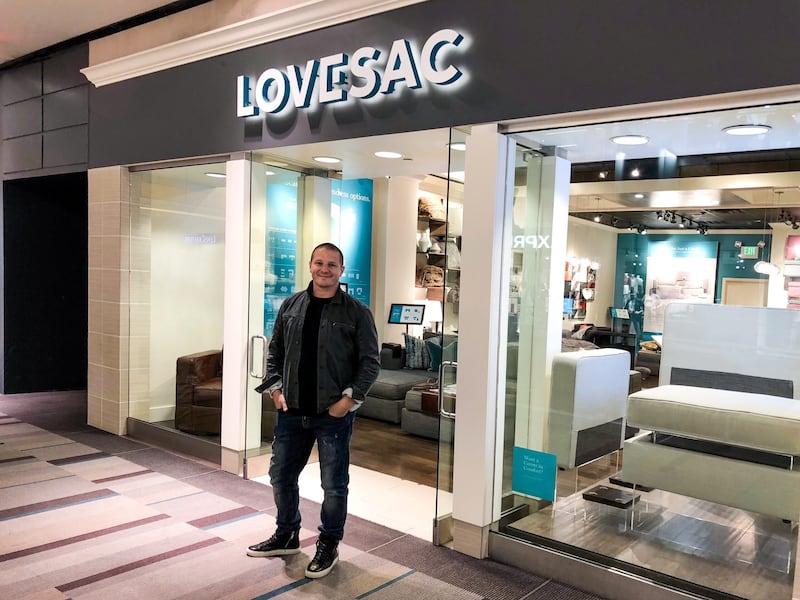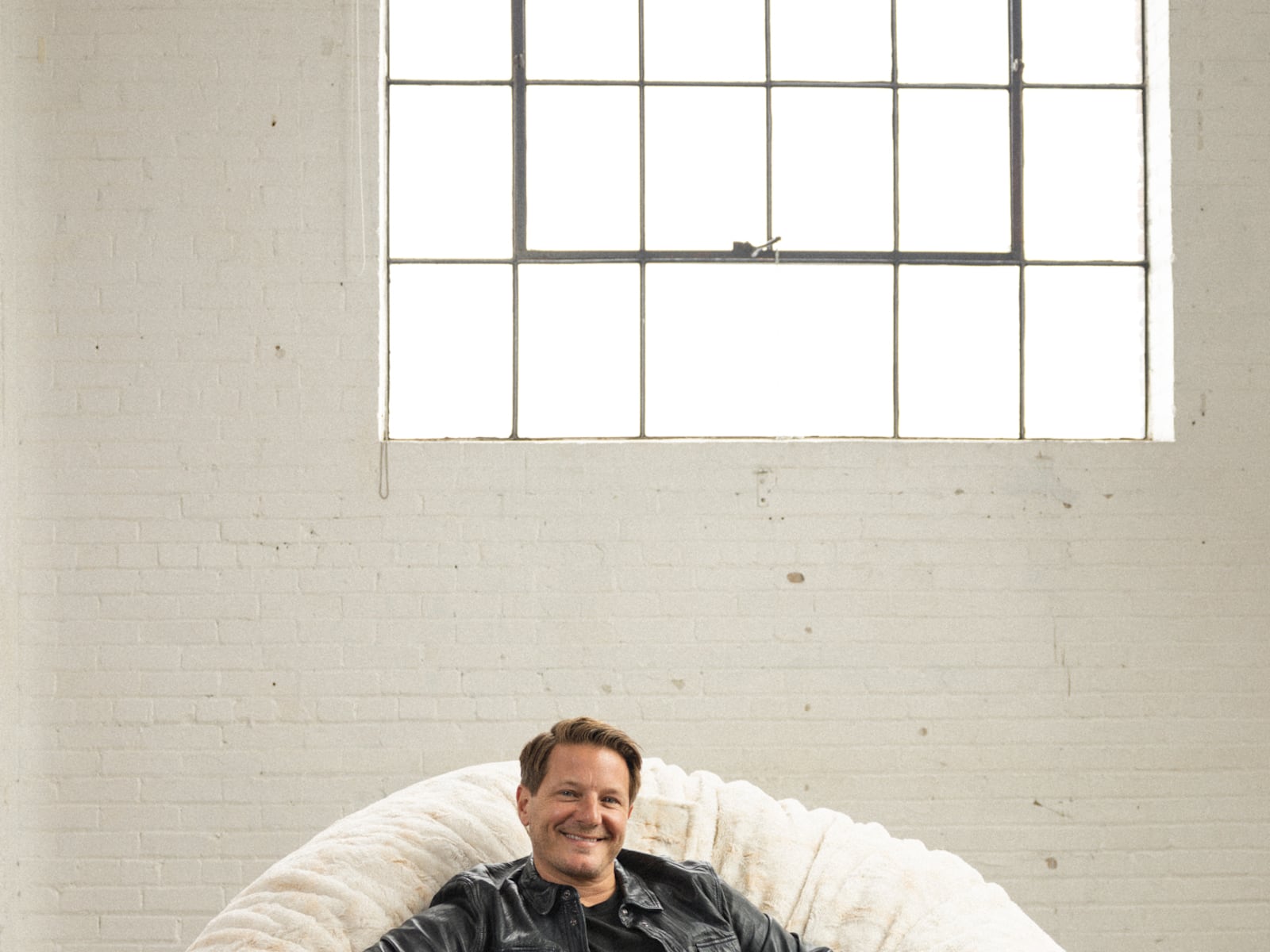SHAWN NELSON PHOTOGRAPHED BY ORI MEDIA
The Founder Series is a column by and about Utah founders and how they got to where they are today. Click here to read past articles in the series.
I think boredom is a hugely underrated activity when you’re young. Kids don’t know how to be bored anymore, and that’s unfortunate. If it weren’t for a bit of boredom, my life wouldn’t be nearly as exciting as it is right now.
This is the short version of the story behind the company that changed the world’s mind about bean bags, changed my life, and is now changing how people think about (hopefully) everything they buy. But before I get into all the “disruption" talk, I’ve got to tell you about a bored kid, a paper cutter and Bob Barker.
The first Lovesac
It’s 1995 and I’m 18, sitting on my parents’ couch in Salt Lake City, Utah. I had just graduated from high school, and I was watching “The Price is Right.” I had a sudden, wild idea as Bob Barker introduced the Showcase Showdown: How funny would it be to watch this in a massive bean bag that covered the whole floor? The more I thought about it, the more I knew I had to act on it.
I got off the couch and drove to JOANN Fabric and Crafts. I grabbed six or seven yards of black and tan vinyl that was on the clearance table and rolled it out on the floor at home. I drew out a giant figure eight because that was the only pattern I knew would make a sphere. When I jammed my sewing machine, I asked my friend’s mom to finish sewing it.
I searched our garages and storage areas and found my parents’ camping mattresses: old, yellow pieces of foam rolled up with bungee cords. I chopped them into strips and squares and used them to stuff my first bean bag chair. It was squishy and comfortable, and everyone loved it. I made a few more and brought them with me anytime I went out with friends.
Everywhere I took them, everyone wanted one for themselves. They were perfect for drive-ins, movie nights and camping trips. When my neighbors convinced me to make them bean bag chairs of their own three years later, the demand took off. Their friends wanted them, then their friends’ friends wanted them, and before I knew it, I needed a name for my company. I thought about “Peace, Love, and Beanbags," “Make Love Not War,” love bag, love…Lovesac. It cost me $25 to register the name, and in October 1998, Lovesac officially began as a company.

Foam, factories and the ‘Funnel of Love’
When I came home from my mission and started college at the University of Utah, I lived in my parents’ basement, a converted ballet studio. It was a 1,000-square-foot room with a futon in the corner and nothing else—the perfect place to roll out huge, long rolls of fabric. I’d draw the arcs of a figure eight, cut them out and deliver them to a seamstress who lived up the street. She would sew them up and put a zipper in, and then we’d pick them up, stuff them and deliver them to our customers. We outgrew the dance studio pretty quickly, and I needed a space to run a more functional Lovesac factory.
I also needed foam, and I needed it fast. This was long before Google, so I had to use the Yellow Pages. I looked up furniture and sofa manufacturers because I knew there was foam inside of sofas. Sure enough, there was a manufacturer right in Salt Lake City called Intermountain Furniture. I rolled up to this factory unannounced and knocked on the door.
At the reception counter, I said, “Hey, I need to buy some foam." One of the owners walked me back to the warehouse and showed me a giant pile of scrap foam pieces. They said if I swept it up and cleaned it once a week, I could buy it for five cents a pound.
That afternoon, I loaded up my 1976 Ford Bronco with scraps, thinking I had just hit the lottery. But like many things with a startup, a solution often comes with problems you hadn’t considered. I had no way to shred the piles of foam now filling up the dance studio.
This was a hard lesson in scalable production. I was literally on my hands and knees using an old paper cutter to cut foam scraps into squares. It took days, and then I still had to get the foam into the Sacs. For that, there was the “Funnel of Love."
We took some of the vinyl and sewed it into an oversized bag that I hooked to eyelets on the ceiling and could raise with a rope. We then filled this huge bag full of chopped foam and connected the bean bag chair on the bottom end of it. It was the worst operation you’ve ever seen, but it was all we had to work with. We filled about five bags this way before I was ready to snap.
Big Sacs on campus
The next time I went to pick up scraps, I asked the Intermountain Furniture people, “Do you have any way to shred this foam up?" And one of the guys said, “Oh yeah, come back here. We’ve got this old foam shredder." It was technically a grain grinder, like a wood chipper you’d use in your backyard. It had been converted with a tube coming out and a blower to shred foam, but they hadn’t used it since the 1980s.
We fixed the shredder, and sure enough, we shredded foam 100x faster than by hand. We would bring the finished products out of our makeshift factory into our trusty Lovesac van, a rusty 1979 Dodge that my parents had given me after the engine had stopped working. We rebuilt the engine, got it running and spray-painted the side with the Lovesac logo. We were in business.
We set up shop at the Student Union Building at the University of Utah during an on-campus event. We paid just $200 for a 10’x10′ space on the lawn, laid out a few Sacs in different sizes and colors (which was pretty much our entire inventory), played some Bob Marley on a boombox and let the people come to us.
We quickly became known as the “Lovesac guys" around campus, with even the frats and sororities buying a few Sacs for their houses. We probably sold 15 or 20 that day, which was our breakout moment. From there, we were a fixture at any event we could find—boat shows, home shows, car shows, Oktoberfest—and this is how we grew the company.

The sky’s the limit(ed)
As we grew, I was working harder than ever. I was waiting tables at a Chinese restaurant and we were constantly fixing things, like the van or the shredder, and buying more fabric. Then, at a trade show in Chicago, Limited Too placed an order for 12,000 Lovesacs. Little did they know that it was just me and a buddy working out of a rundown building with a wood chipper as a foam shredder—they wanted the Lovesacs by Christmas.
On September 1, 2001, we had a full container load of perfectly folded little Lovesacs that needed to get filled with foam over the next 60 days to ship in time. We increased our footprint in the Intermountain Furniture building to about 5,000 square feet by taking over an old warehouse section of their factory that they weren’t using anymore.
The first time I got in there on a forklift, it fell through the floor with me on it. We drove out to farm country and discovered this machine called a Haybuster, but as a farm implement, it had to be powered by a tractor. We modified it for our purposes, got an agricultural loan from the federal government for farm equipment and brought the Haybuster and tractor to downtown Salt Lake City.
Despite every inefficiency, we completed the order, but then realized we had no other big customers to sell to. We went to the furniture stores, but they laughed at us, so we decided to open our own store. The first Lovesac store opened on November 17, 2001.
A store of our own
It was just before the Winter Olympics, and the whole city was buzzing. We secured a temporary lease in a brand-new mall that put Lovesac right at the center of it. It was thrilling, and I knew we were on the cusp of something big. But on paper, I was a college graduate making $10 an hour slinging bean bags at the mall.
That store changed everything. People came in, flopped down and hung out with friends. The product was the best sales pitch we could give. We were doing six figures in just the first few weeks, and I had never seen money like that. We promptly ran off to open the second store in Provo, Utah, then others in Las Vegas, Phoenix and Southern California. Growth went ballistic.
We had grown to 35-40 locations when I got recruited to be on Richard Branson’s reality TV show, “The Rebel Billionaire,” in 2005. This would be a national prime-time show on Fox, and I won a million-dollar investment! I was $2 million dollars in debt, so we took the winnings, paid off some debt and raised more money through venture capital.
The venture capitalists wanted to bankrupt the company and start over through Chapter 11. I was devastated. We had made it all this way, yet somehow, the only way forward was to begin again. We moved the company to Stamford, Connecticut, downsized the staff to a skeleton crew and started over with just 12 locations and about 12 employees at our tiny new HQ. It was the right move in the long run. We learned, focused and built Lovesac back up to 50 locations. Some people might have coasted after that, but I got another wild idea. Ironically, this one happened because of a couch, too.

The Sactional is born
In our first store, we had a couch in the corner to show the Sacs in a living room-type environment. Customers always asked to buy the couch. What if we could shrink down this couch the way we shrink down our Sacs?” That’s how the concept of Sactionals was born.
Sactionals are modular couches that you customize to fit your lifestyle. As your lifestyle changes—you move into a bigger place and start a family—the couch can change with it. They were washable, changeable, stackable and shippable. The idea put us in competition against some of the most sophisticated furniture companies on the planet. We focused on becoming a direct-to-consumer furniture brand with Sactionals as the focus, and the product quickly became the fastest-selling couch solution in the United States. We expanded to nearly 80 locations and took the company public in 2018 with $100 million in sales.
After you go public, the sky’s the limit. The company was worth $200-300 million overnight. It still feels like a dream. Lovesac grew to hundreds of locations by the 2020s. We have thousands of employees, and we’ve been named the fastest-growing furniture company in the United States numerous times.
I couldn’t be prouder. Sactionals gave us a new future. Their rapid adoption revealed that people love the idea of objects being built to last a lifetime and designed to evolve throughout a customer’s life. We’re proving that planned obsolescence was the wrong way to make a brand that lasts. We call this new approach to innovation Designed for Life, and it will inform everything we do from here on out.
Designed for life
Consumers are becoming more aware of the environmental impact of “fast fashion"—brands that make cheap clothes that wind up in a landfill after a few months. “Fast furniture" is just as bad for the planet and its people.
Designed for Life makes us look at ways to extend the lifespan of our products and make them easier to clean, repair, transport, upgrade and even reclaim someday. We currently recycle more plastic bottles than any company, as the millions of Sactionals we sell are upholstered in this recycled material. Our stated purpose as a company is to inspire humankind to buy better stuff and less stuff.
After 25 years, telling this story still fills me with excitement and disbelief. Growing Lovesac into what it is has taken my entire adult life and is the hardest thing I’ve ever done. I have so many memories and have built so many lifelong friends throughout this journey that make all the stumbles, roadblocks, sleepless nights and unrelenting stress worth it. My advice for anyone considering starting down the road of being a founder would be this: Get off the couch! Trust your instincts and just keep going. That life-changing moment could be right around the corner, and the last thing you want to do is turn back just before you arrive.

